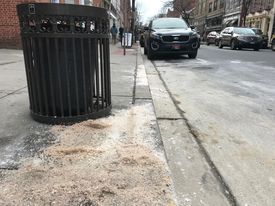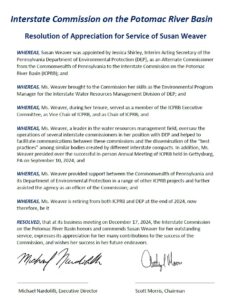News from around the basin – February 20, 2025
Celebrating Black History Month
It’s Black History Month. No matter what we look like or where we come from, we all have many visionary minds to thank for today’s scientific progress.
These five pioneers have made lasting impacts to the water we depend upon. Their years of labor and sacrifice continue to impact engineering, science, and conservation work today.
Solomon Brown (1812–1906) was born free at a time when slavery was still legal in the District of Columbia. Solomon Brown was the first Black employee at the Smithsonian Institution. “Professor Brown” as he was called, was a natural historian, illustrator, poet, and philosopher who helped lay the foundation for environmental studies at the Smithsonian.
Marguerite Williams (1895–1991) was a pioneering geologist, the first African American to earn a doctorate in geology in the United States. Williams, a Washington DC native, studied erosion in the Anacostia Basin for her dissertation. Her work greatly contributed to the understanding of how groundwater in the Potomac River Basin interacts with surrounding ecosystems. The Marquerite T. Williams Award is presented annually to mid-career scientists by the American Geophysical Union in her honor.
Emmett Chappelle (1925–2019) was a biochemist and astrobiologist best known for his development of his discovery that single-celled organisms, such as algae, have the ability to photosynthesize i.e., convert carbon dioxide and water into oxygen — a characteristic previously attributed only to plants. This work extended to launching plants into space to prevent carbon monoxide poisoning and to create artificial oxygen (and food) supply systems for astronauts in spacecrafts. He also made groundbreaking contributions to understanding the bioluminescence of organisms, such as fireflies and other marine animals.
Gladys West (b. 1930) is a mathematician and technology pioneer whose work contributed to the development of the Global Positioning System (GPS) and remote sensing, directly influencing modern mapping and water resources engineering. Gladys began her career on the Potomac River, at the Naval Surface Warfare Center at Dahlgren, Virginia, where she was a skilled mathematician and computer programmer.
Mamie Parker (b. 1953) is a highly regarded pioneer in the conservation field. She was the first Black woman to serve as the Assistant Director of Fisheries and Habitat Conservation and the first to lead a USFWS regional office, covering 13 northeastern states. Her conservation work has made a lasting impact on aquatic life in the Potomac Basin.
Thank you to these five American scientists.
River Report
It seems the recent rain and snow events have dampened the drought for a good portion of the watershed. It’s nice to see some white in today’s drought map. It has been a while since we have seen a U.S. Drought Monitor map of the Potomac River watershed that wasn’t fully splashed with red, orange, or yellow.
The southwest section of the basin is out of drought status (white), while 26% is abnormally dry (yellow), 45% is in moderate drought (light brown), and a tiny sliver of the southeast remains in severe drought (orange).
Precipitation as a whole is still low for the winter. We have seen 3.4 inches of precipitation below average since last August.
As of this morning, the river’s flow at the USGS Point of Rocks gage is 17,500 cubic feet per second. The flow has remained above the historical median since the beginning of February.





 How will the recent rain impact chloride levels in our streams and waterways? Why do chloride levels matter? What can the public do to make a difference?
How will the recent rain impact chloride levels in our streams and waterways? Why do chloride levels matter? What can the public do to make a difference?









